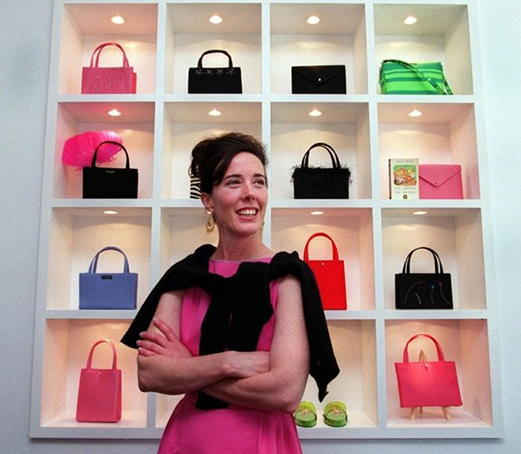 My husband often says that society should advance in the direction where we move from having independent individual style to wearing uniforms. This is his radical solution to over-consumption, pollution (the fashion industry is second largest polluting industry) and time-wasting vanity.
My husband often says that society should advance in the direction where we move from having independent individual style to wearing uniforms. This is his radical solution to over-consumption, pollution (the fashion industry is second largest polluting industry) and time-wasting vanity.
The suicide, earlier this week, of fashion designer Kate Spade, who was known for her quirky handbags that radiated joy, caused me to reflect on his farfetched, terribly restrictive and boring suggestion. We have been culturally brainwashed to associate mental illness with mental institutionalization only and to see illnesses like depression and anxiety as personal, over-reactive, temporary phases. So, when people succumb to the illness as did Spade, but don’t fit these specifics, it shocks us to our core. It makes us examine how easy it is to temporarily mask issues, how we scrutinize our image based on the way the world sees us and the interconnection of our personal consumption and sartorial choices as they relate to our present mental state.
To most people Spade would have appeared to be happy, someone who had it all, based on the optics of her life. Given her successful business, family, and beautiful home, mental illness would be difficult to fit into this lifestyle perfection. In an industry that is built around selling a fantasy and desirous dreams, it not difficult for anyone to picture why some feel unable to seek help, stressed to keep up appearances or would question their illness as it relates to their achievements.
With unfortunate events such as Spade’s death, we usually tend to do two things, instead of the one thing that would make the most difference. We glorify the person’s achievements and scrutinize their personal situations but do not attempt to address the double-edged sword of surviving in the industry with a mental illness. There is the constant battle to live a life of glamour, the unrealistic ideas of perfection and most importantly consumption. However, sartorial choices are no indication as to how someone is doing mentally and emotionally.
According to ‘Consumer Behaviour and the Wayward Mind: The Influence of Mania and Depression on Consumption’ by Elizabeth C Hirschman and Barbara B Stern as published by the Association for Consumer Research, while a symptom of depression can be poor grooming, “the tendency of depressed consumers to feel negative about body image and to engage in self-denying behaviours is often compounded by inattention to grooming and personal care. Mild to moderate levels of depression are made manifest by minimal standards of hygiene and grooming, and such consumers usually make little effort to look attractive. In this state, choice, choice of apparel, grooming, and eating become very routinized, and such consumers may find the prospect of change disconcerting (Duke and Hochman 1992).”
However, the extremes with depression and other varying mental illnesses differ with some gravitating to a hypomanic state. According to Hershman and Lieb 1988, p.23, hypomanic consumers are “aglow with good health and attractiveness”. They spend time making sure that their hairstyles, grooming, and apparel are fashionable and becoming (Goodwin and Jamison 1990), often engaging in narcissistic consumption. One consequence of their excessive spending during periods of hypomania is often increased debt and the threat (sometimes the reality) of bankruptcy.
Fashion is a complex industry and while the gruelling realities of the way it taxes its shareholders mentally are swept under the rug for the sake of upkeeping an image, we need to try to not rely on appearance as a way publicly diagnosing people. Someone may be well dressed or generous with their spending and that may be a way of dealing to pressure, while someone may choose to stay in their pajamas for five days. Both mental states are equally important.
Let this be a lesson to us, all that glitters is not gold and there is no way of knowing until you scratch the surface for the ultimate truth. So, whether we are dressed in uniforms or in Chanel, assume nothing.










